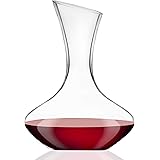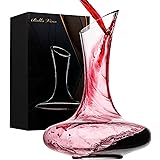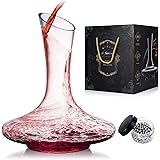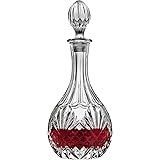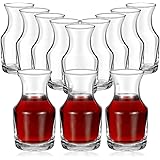Welcome, fellow wine enthusiasts! If you’re just starting your journey into the delightful world of wine, you’ve likely encountered a common challenge. You might find yourself wondering about the best way to keep your cherished bottles. Many beginners make simple storage mistakes. These errors can quickly diminish the quality of your wine. This accompanying article expands on the video above, offering foundational tips for effective wine storage. Let’s explore how to properly preserve your wine’s flavor and longevity.
The Essential Science Behind Wine Storage
Wine is more than just a beverage. It is an agricultural product. Grapes are organic plant material. This means wine is perishable. Think of wine like fresh produce. You wouldn’t leave vegetables out in the sun. Similarly, wine needs careful handling. Proper wine storage ensures its stability. This preserves its complex flavors. Neglecting proper storage can lead to rapid spoilage. Understanding these basics protects your investment.
Temperature Stability: A Core Principle
Temperature is perhaps the most critical factor. Wine needs a stable environment. A cooler temperature is always better. Heat can literally “cook” your wine. This damages delicate aromatics. Rapid temperature swings are also harmful. They cause wine to expand and contract. This can push corks out. The ideal fluctuation is minimal. Never let it change by more than 10 degrees. Your kitchen is often a poor choice. Cooking creates significant heat variations. Summer months also bring increased temperatures. A basement provides a naturally cool space. Look for a dark closet if a basement isn’t available. Consistency is truly key for wine preservation.
Vibrations: Silent Killers of Wine Quality
You might not immediately think of vibrations. Yet, they pose a significant threat. Even slight tremors are damaging. Vibrations can disturb a wine’s sediment. These particles settle over time. Constant movement causes them to re-suspend. This can lead to a gritty texture. It also accelerates chemical reactions. Red wines are especially susceptible. Keep bottles away from appliances. Refrigerators and washing machines vibrate. Air conditioners also produce movement. Choose a still, quiet location for your wines. This protects their delicate structure.
Light Exposure: A Recipe for Ruin
Light is another major enemy of wine. Ultraviolet (UV) light is particularly harmful. It can penetrate most wine bottles. UV rays break down organic compounds. This causes “light-struck” flavors. These off-notes are undesirable. Sunlight is a double threat. It combines UV light with heat. This quickly degrades wine quality. Avoid displaying bottles in direct sunlight. Store wines in dark places. Many wine bottles have dark glass. This offers some protection. But full darkness is always best.
Advanced Techniques for Optimal Wine Storage
As you become more serious about wine, you can explore advanced options. These solutions offer precise control. They cater to a growing collection. Think of them as long-term investments. They ensure your wines age gracefully. You maintain ideal conditions consistently. This truly elevates your wine experience.
Humidity Control: Protecting Your Corks
Humidity is vital, especially for corked wines. It keeps corks from drying out. A dry cork can shrink. This allows air to enter the bottle. Oxidation then spoils the wine. The ideal humidity level is around 70%. Achieving this can be challenging. Basements often naturally provide good humidity. Crawl spaces also work well. For dedicated storage, humidifiers help. They maintain stable moisture levels. This ensures a tight, protective seal for years.
Cork vs. Screw-Cap: Storage Positions Matter
The closure type dictates bottle position. Wines sealed with corks must lie on their side. This keeps the cork moist. The wine itself maintains contact. This prevents cork shrinkage. It ensures an airtight seal. Screw-cap wines, however, are different. They do not require horizontal storage. You can stand these bottles upright. This saves valuable shelf space. All other storage principles still apply. Temperature, vibration, and light remain crucial.
Investing in a Wine Refrigerator: The Ultimate Solution
A wine refrigerator offers supreme control. It maintains precise temperatures. Many models include humidity control. Some even feature dual-zone settings. This allows different temperatures. You can store reds and whites separately. Red wines often prefer warmer storage. White wines need cooler conditions. A good wine fridge stores wines at serving temperature. This means no waiting. You can enjoy your wine immediately. This convenience is a great benefit.
High-end wine refrigerators come with many features. They protect wine from all external factors. They also prevent vibrations. Look for models with UV-filtered glass. This adds another layer of protection. These appliances safeguard your collection. They represent a smart investment for serious enthusiasts.
Smart Buying: Finding Affordable Wine Storage
You don’t always need to pay full price. High-quality wine refrigerators can be expensive. Savvy shoppers find great deals. The Wine Enthusiast online store is one option. They have a “Scratch and Dent” section. These units have minor cosmetic flaws. They are often deeply discounted. Refurbished models are also available. You can even negotiate prices. This is a pro tip for beginners. You get premium wine storage without the premium cost. It allows anyone to upgrade their wine preservation game.
Proper wine storage transforms your experience. It prevents common mistakes. You protect your wine’s integrity. These practical tips are easy to implement. They ensure every bottle tastes its best. Happy sipping, and enjoy your perfectly stored wines!


